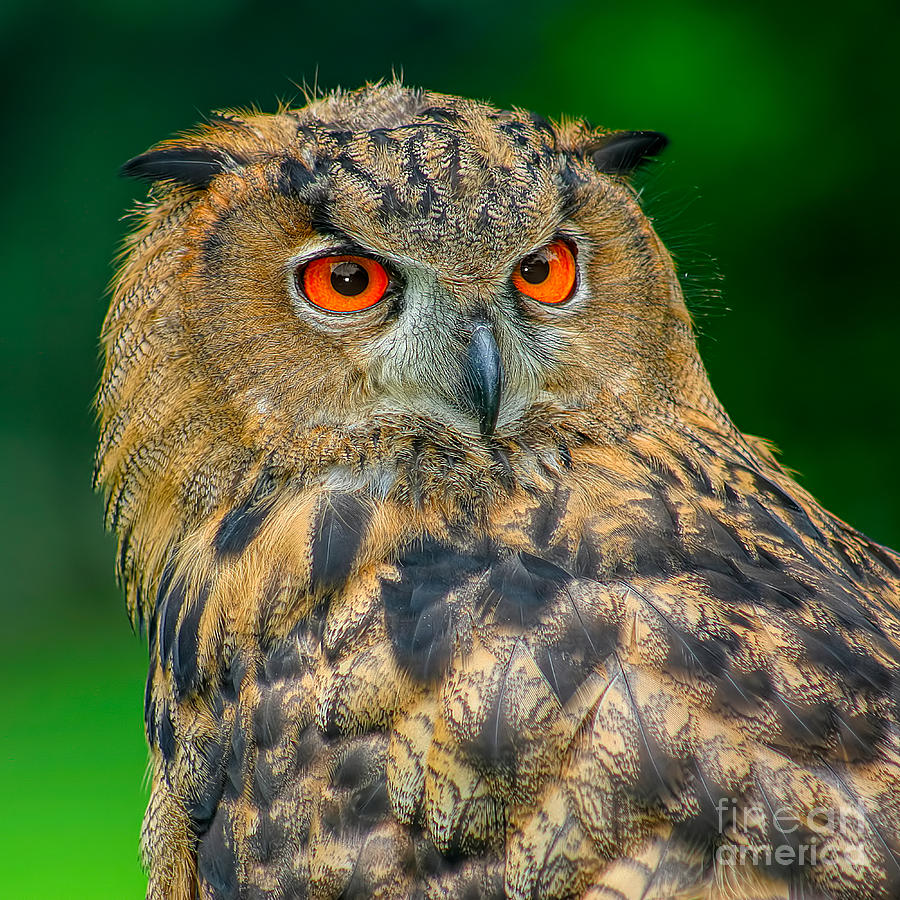The Eurasian Eagle-owl: A Closer Look At Bubo Bubo Ruthenus
Share
The Eurasian Eagle-Owl, scientifically known as Bubo bubo, is a magnificent bird of prey that captivates birdwatchers and nature enthusiasts alike. Among its subspecies, Bubo bubo ruthenus stands out, particularly in its native range of southeastern Russia. This article delves into the taxonomy, physical characteristics, habitat, diet, behavior, reproduction, and conservation status of this remarkable owl.

Taxonomy
The Eurasian Eagle-Owl belongs to the order Strigiformes, family Strigidae, and subfamily Buboninae. The subspecies ruthenus was first described by Buturlin and Zhitkov in 1906, with its type locality in Simbirsk, Russia. This classification places it among the largest owls in the world, known for their impressive size and striking appearance.
Physical Characteristics
The Bubo bubo ruthenus is characterized by its large size, with a wingspan that can reach up to 1.8 meters (5.9 feet). Its plumage is predominantly mottled brown, providing excellent camouflage against the forest backdrop. The owl features distinctive ear tufts, which can be raised or lowered depending on its mood. Its bright orange eyes are a hallmark of the species, providing excellent night vision.

Habitat
This subspecies primarily inhabits the forests and mountainous regions of southeastern Russia, extending from the valley of the Volga in Nizhni Novgorod to Perm and southward to Voronezh. The preferred habitat includes dense woodlands, rocky outcrops, and areas near water bodies, which provide ample hunting grounds and nesting sites.
Diet
The Eurasian Eagle-Owl is a formidable predator, primarily feeding on small to medium-sized mammals and birds. Its diet includes species such as rabbits, hares, and various rodents. The owl's hunting strategy involves silent flight and powerful talons, allowing it to ambush prey effectively. It is also known to scavenge when necessary, showcasing its adaptability in the wild.

Behavior
Bubo bubo ruthenus is primarily nocturnal, exhibiting peak activity during the night. Its call is a deep, resonant hoot that can be heard over long distances, serving as a means of communication with potential mates and territorial displays. During the day, these owls can often be found perched on high branches or rocky ledges, where they can survey their surroundings.
Reproduction
The breeding season for the Eurasian Eagle-Owl typically occurs in late winter to early spring. Mating pairs are known to be monogamous, often returning to the same nesting site year after year. The female lays a clutch of 1 to 4 eggs, which she incubates for about 30 days. The young owls, known as owlets, fledge approximately 6 to 8 weeks after hatching but remain dependent on their parents for several months.

Conservation Status
The conservation status of Bubo bubo ruthenus is currently classified as Least Concern by the IUCN. However, habitat loss and human encroachment pose significant threats to its population. Conservation efforts are essential to ensure the survival of this majestic bird, particularly in areas where its habitat is being compromised.

Observing the Eurasian Eagle-Owl
For birdwatchers eager to observe the Eurasian Eagle-Owl in its natural habitat, the best approach is to visit its range during the twilight hours. Look for them in forested areas or near rocky outcrops, where they are likely to perch. Patience and silence are key, as these owls are sensitive to disturbances.
The Bubo bubo ruthenus is not just a bird; it is a symbol of the wild, embodying the beauty and mystery of nature. Its presence in the ecosystem plays a crucial role in maintaining the balance of prey populations, making it an essential species for biodiversity. Observing this magnificent owl in the wild is an unforgettable experience that highlights the importance of conservation efforts to protect its habitat and ensure its survival for future generations.